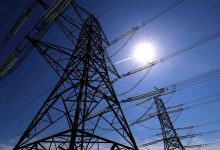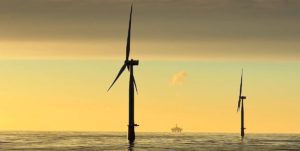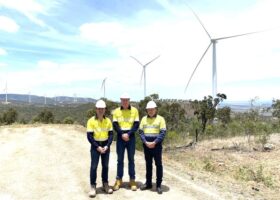When the Victorian Government announced it was creating VicGrid, a new entity that will be responsible for the connection of renewable energy, it reinforced how impatient many states and territories have become and chosen to ‘go it alone’ when it came to clean energy.
Market forces will dictate the impending closure of ageing coal-fired power plants.
According to Green Energy Markets and the Institute for Energy Economics and Financial Analysis, up to five out of 16 remaining coal fired power plants in Australia will become financially unviable and this will advance their closure.
Australia has entered a period where wholesale electricity prices are at their lowest in recent history thanks to a slew of new wind and solar generation capacity in the National Electricity Market (NEM). Even through a period of policy uncertainty, renewable energy has staked its claim on the grid.
The Clean Energy Regulator has estimated that 7GW of new renewable energy generation capacity was commissioned last year, making the argument to retire some of our coal-fired power plants much earlier more compelling.
The pressure to accommodate the growth of renewables on the grid has gained further momentum in the last 12 months.
From plans for New South Wales, Queensland and Victoria to create Renewable Energy Zones (REZ) to support regions that have a high potential for renewables, to the ambitious NSW Electricity Infrastructure Roadmap that looks to reduce carbon emissions from energy by 90 million tonnes by 2030.
25 percent of Australian homes now have rooftop solar and the appetite for solar PV and home batteries fuelled by subsidy schemes or interest-free loans in South Australia, New South Wales, Victoria and the Australian Capital Territory will create greater energy independence — but also threatens to destabilise the grid and the functions of the NEM.
What has added pressure to the relevance of the NEM are the disparate needs of the states who are connected to it. For example, South Australia has focused on innovation by finding better ways to adopt solar, storage and electric vehicles.
New South Wales has made a significant investment in its electricity network and it is now ready to capitalise on new economic opportunities such as the REZ.
In Victoria, the rollout of smart meters and a forward thinking state government has driven energy regulatory reform. Queensland has leveraged its history in untangling issues it has faced with its network to develop forward slow but steady solutions around the adoption of clean energy
Without achieving consensus on energy policies, rules and energy market reforms, we are heading towards a collision course that could lead to fragmentation in the NEM.
Key questions that we now need to address for the future of the NEM include:
- With renewable energy having become such a political issue, how will the NEM evolve even as Federal politicians attempt to dictate on the economics and dynamics of the market, including the focus on protecting the coal and gas industries?
- Can we create a new and workable solution for the world’s longest interconnected power system that supplies electricity to ten million customers?
- Is it even possible to keep these customers and stakeholders who operate on the NEM satisfied with this a model that was developed in a different era?
If these questions aren’t addressed, we could very well see the NEM becoming even more splintered, with states and territories going their own way on renewables and infrastructure planning.
But that could all change if we could focus on accelerating and/or implementing just three things to help the NEM evolve and become fit for purpose again.
- Separating the market from the system
In their Open Energy Networks (OpEN) Position Paper, the Energy Networks Association has suggested splitting the functions of the market and the system with separate but integrated Distribution System and Distribution Market Operators (DSO & DMO).
The implementation has been proposed for a post-2025 grid when a number of other reforms have already been enacted.
The DSO’s explicit job will be to ensure system stability, linking up to the DMO to optimise the provision of services and energy from DER within constraints defined by the DSO.
We as an industry need to rally behind this proposal, which encapsulates the shift we are experiencing in the sector as energy generation becomes increasingly localised.
With solar PV and batteries playing a bigger and bigger role, it’s hard to imagine how we will be able to keep the NEM operating smoothly and efficiently without this crucial change.
- Better incorporation of Distributed Energy Resources into the NEM’s operation
West Australia – home to Australia’s second largest energy grid, the Wholesale Electricity Market (WEM) – has a clearly defined DER Roadmap that identifies how to maximise the contribution of DER on the grid.
The Roadmap is transparent and clearly outlines how the industry, utilities and DER owners should be integrated in the WEM.
SwitchDin not only endorses this Roadmap and projects such as the Onslow DER Project in WA illustrate how we can better incorporate DER into an electricity market.
Unfortunately, we’re not even close to defining what this would look like in the NEM. But could this change with the Distributed Energy Resources (DER) Register?
The DER Register is a starting point, with some degree of data and visibility into solar and battery assets for the nearly two million households, businesses and industrial connections that are included so far.
All up, Australia has more than 2.6 million rooftop solar systems installed around the country, making it a world leader in DER. We should push to make the most of the DER Register, as it represents an important step towards better incorporation of DERs on the NEM.
There is a better future for everyone if we can identify network constraints, increase investments or make strategic changes ahead of time at both state and local levels.
- Implementation of Flexible Exports
The Flexible Exports trial that SA Power Networks and AusNet Services have undertaken with the support of the Australian Renewable Energy Agency (ARENA) will demonstrate how we can increase the penetration of DER and renewable energy by using smart inverters and software.
This is a world-first project that will look to increase solar hosting capacity of electricity distribution networks.
The trial will test if distributors can find an alternative over strict export limits and create more value for homes & businesses who want to connect PV systems to the grid and improve the security of the grid at the same time.
What Australia is doing with the Flexible Exports trial addresses an increasingly pressing problem with high PV penetration in a growing number of countries globally.
The outcomes of this trial will shape how Australian networks allow households on any constrained grid environment to connect more solar PV systems.
Using the same principles from this scenario, Horizon Power have demonstrated how they can respond to the growing demand to connect DER in Onslow with an end-to-end DER management system that has tripled the capacity for rooftop solar on its network.
There’s a lot to be said about having one country and two systems in Australia – the NEM and WEM. It would be fair to say the NEM has a lot to learn from the WEM, which as the ‘canary in the coalmine’ is leading the way in acknowledging a future energy market that is led by DER.
Utilities such as Horizon Power have shown how they can manage the growth of DER on the network. Western Power have similarly changed the way they manage DER with community batteries, projects with commercial partners for load shifting.
With data and technology, we have the ability to address the imbalances we’re seeing in the NEM right now. We could find the right balance for wholesale electricity prices if we have better insights on how much generation is actually needed.
Using technology to control and manage DER will give more confidence to everyone – from households to large scale energy asset owners – to invest in renewable energy.
We can recalibrate how the electricity market should operate and, in the process, define if the NEM needs to be retired – or modernised to keep up with the times.
Andrew Mears is CEO and founder of SwitchDin










